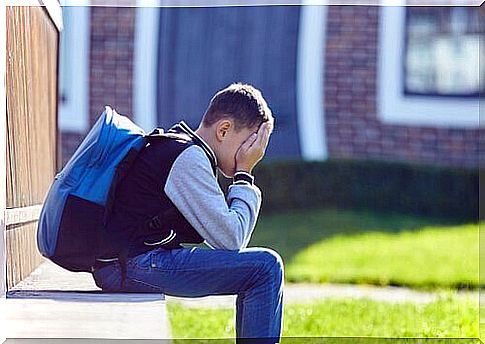How Do Students With School Anxiety See School?

What do students think of the school? This essential question helps us understand students’ attitudes towards learning. If you see school in a positive light, you will be motivated to work hard yourself. It will also be easier to teach them. In contrast, negative feelings and fear of school are associated with ineffective learning and rejection of school.
Various studies have come to alarming results regarding the thoughts and feelings about school that students have about school. Some research showed that up to 35% of students do not want to go to class. These results are all the more worrying if we assume that most of us, including children, have an innate motivation for knowledge and self-actualization. The school is an institution which, in principle, is designed to meet this need. However, this is not the case, which leads us to conclude that there must be certain factors that negatively affect students’ perception of the school.
Why students refuse school
Fear of school is one of the main reasons some students reject school.
Fear of school is the central factor that largely explains student rejection of school. Attending school leads to high levels of stress among the students and thus to an avoidance reaction. This happens when the fear that is perceived in going to school becomes greater than the satisfaction that is achieved in learning than the self-actualization that is possible in class. We have to keep in mind that negative aspects like fear of school have greater power than long-term impulses, even if the latter are positive.
Why do students suffer from school anxiety ? The best way to analyze this problem is to understand their perspective. We have to put ourselves in the shoes of the children who go to class. If we do that, we will soon find that they have too long a schedule, high pressure to perform, boring subjects and little motivation.

Timetable
Children get up very early every morning from Monday to Friday to be in class for 6 to 8 hours. In addition, they have a series of homework to do every day when they get home . This takes another 2 to 4 hours, depending on performance and grade level. And if you want to get good grades in class, you have to study too.
If we add it all up, we arrive at a target of around 50 to 65 hours per week, which is much longer than a legal working week. In addition, many parents occupy the remainder of their children’s time with extracurricular activities. The children are literally suffocating between all their tasks and obligations.
This inevitably leads to fear, rejection of the school and all that it represents. School becomes a place of horror for the children, no matter how much it is connected with the acquisition of knowledge. Therefore, free time is essential for every child.
High pressure to perform
Our education system uses a scoring system based on reports in the form of letters or numbers related to the performance shown. It’s a very competitive system. Those with good grades are praised, while those with poor grades are reprimanded.
In addition, we see a strong tendency to attribute these failures or successes to the students alone. In fact, the teachers are at least partly responsible, and this situation creates tension. Students feel pressured to get the best grades in the class. They forget that their ultimate goal is to learn, assimilate knowledge, and acquire the ability to find, use, and manage information and resources. Because of this , those students who fail to meet third-party expectations will feel anxious.
Imagine a school that, rather than pushing students to pass exams, focuses on their weaknesses and nurtures their strengths. It is easy to imagine that the fear associated with performance would go away. They would no longer have to meet high standards and would no longer consider assessments or tests as threats.
Boredom and teaching based on passive learning
This factor does not have a direct impact on school anxiety, but it does indirectly encourage students to reject school. If the lessons are not made interesting enough, they are less motivated to learn. This means that with a minimum of fear, the student’s desire to learn will wane.
Many teachers still teach face-to-face teaching and the students have to memorize the content conveyed without being able to question it. In fact, reflection is still frowned upon in some places. So the students learn superficially. This type of learning is really boring and not very motivating.

In order for students to feel motivated to learn, the new knowledge must appear relevant to them. This is achieved through active learning. Your teachers, parents, and other caregivers should encourage them to explore intuitive theories to see reality in new ways. A good education system is one that doesn’t make students anxious. Since we cannot force them to learn, self-actualization has to be the intrinsic motivation that drives them.









